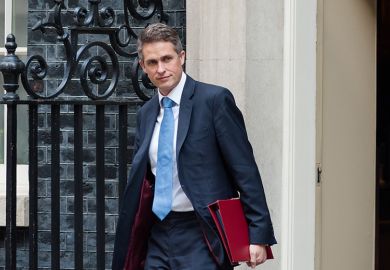The popularity of “conditional unconditional” offers among university applicants in the UK appears to be on the wane, according to a new analysis by Ucas.
Although the proportion of 18-year-olds in England, Wales and Northern Ireland who received such an offer reached a new high this year, students holding them seem only slightly more likely to use them to accept a place.
According to the admission service’s 2019 End of Cycle Report, which looks at this year’s UK university admissions cycle, around a fifth of applicants with one conditional unconditional offer made this their first choice of university, compared with just over a quarter in 2014.
It meant that “they are now only marginally more likely (1.3 percentage points) to select their conditional unconditional offer as their first choice than any of their other offers individually”.
This finding was backed up by a separate survey of applicants, Ucas says, with half of those holding such an offer saying that it would have an impact on their choice of university, compared with 64 per cent the year before.
“Overall, it appears conditional unconditional offers are less attractive to applicants than in previous cycles,” the report says.
The use by institutions of conditional unconditional offers, which become unconditional if they are chosen by applicants, has been heavily criticised by government ministers and England’s higher education regulator, the Office for Students.
With these latest figures also suggesting that they are becoming less likely to influence decisions, the sector will be watching closely during the next admissions cycle to see if their use has now peaked.
One of the central arguments against their use has been that they lead to applicants putting less effort into their school-leaving exams, and the latest End of Cycle Report also provided further evidence in relation to this.
In 2019, 57 per cent of applicants holding any type of unconditional offer missed their predicted A-level results by three or more grades, compared with 43 per cent of those with an offer that was dependent on their final marks.
“Students are considering their offers more carefully than ever, with the type of offer they receive having less of an impact than before. Our advice to students is to always think about what’s most important for them when deciding which offers to accept,” said Clare Marchant, Ucas chief executive.
Elsewhere, the report suggests that there has been a narrowing of the gap in entry rates to the most selective universities for applicants from the most affluent areas compared with those from the least advantaged districts.
Applicants from the most advantaged areas are still 5.27 times more likely to enter the most selective universities compared with those from the most disadvantaged areas, but this is down from 5.74 in 2018, something Ucas says is “significant progress”.
“The higher tariff entry rate gap has narrowed by 8 per cent, the largest year-on-year decrease since 2014, and a new overall low,” the report states, although it says it will publish further analysis on this issue using its more complex “multiple equality measure” next month.
Other stand-out figures from the End of Cycle Report include London achieving an all-time high for its entry rate with 44.5 per cent of 18-year-olds gaining a higher education place, extending the gap over every other English region.
There was also a general increase in the mismatch between predicted and actual grades with 43 per cent of accepted applicants missing their results by three of more A-level points, an increase from 38 per cent in 2018.
Register to continue
Why register?
- Registration is free and only takes a moment
- Once registered, you can read 3 articles a month
- Sign up for our newsletter
Subscribe
Or subscribe for unlimited access to:
- Unlimited access to news, views, insights & reviews
- Digital editions
- Digital access to THE’s university and college rankings analysis
Already registered or a current subscriber? Login








